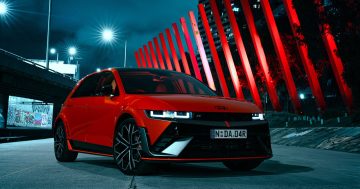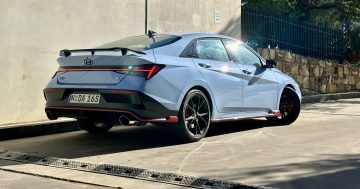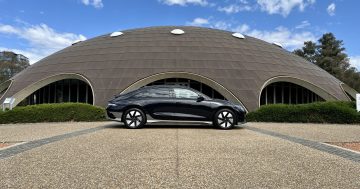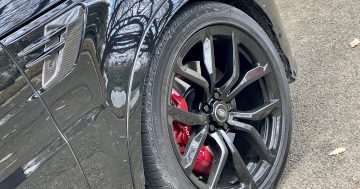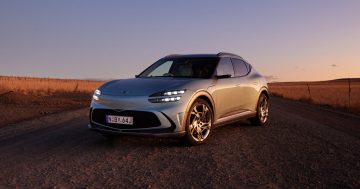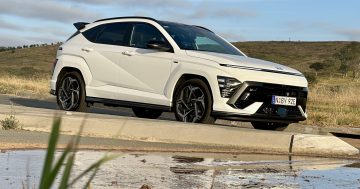With Karl Peskett It’s difficult to overestimate the impact that the Toyota Prius has had on the world. From celebrities to the everyday man on the street, if people see a Prius, they immediately think “hybrid car”. And by virtue of some clever marketing, they also think that the Prius has helped claw back some of the damage done by fossil-fuelled vehicles.
It’s difficult to overestimate the impact that the Toyota Prius has had on the world. From celebrities to the everyday man on the street, if people see a Prius, they immediately think “hybrid car”. And by virtue of some clever marketing, they also think that the Prius has helped claw back some of the damage done by fossil-fuelled vehicles.
But what many people don’t realise is that the Prius originally came out as a four-door sedan. It wasn’t sold here, but from 1997 to 2003, the Prius was launched as the first mass market hybrid. And the reason it didn’t make a big impact is because it just looked like every other vehicle.
It was when the second generation came out that people started to associate the name Prius with hybrid vehicles. And the thing that made more of an impact than any other was its styling. That odd design with its slabby sides and dowdy front end didn’t do much – it was the rear that made it different.

The half-height lift-back hatch made it immediately identifiable. And because it wasn’t simply a derivative of another model, it made being a hybrid stand out from the crowd. As soon as you saw that back end, you knew it was a “green-mobile”. So what did other manufacturers do? They mimicked the design.
Just look at the Honda Insight. The first generation was an ugly mess, so Honda refined it…and made it look exactly like a Prius. And now Hyundai has gone down the same route.
Here we have the Hyundai Ioniq, and if you look at the lift-back arrangement, there’s more than just a few passing similarities. It has the same straight-sided design with the half-height hatch, making its side profile very Prius-like indeed. However, the Ioniq’s wheel design looks much nicer, and the front end is way easier on the eye than the current Prius. Overall, it’s a more harmonious look, but you just can’t get away from the thought that Hyundai’s designers sat there with a picture of a Prius in front of them.

Technically, it hasn’t been launched yet, but we’ve been able to snaffle one for a week to see how it stacks up against Toyota’s ubiquitous Prius.
Hyundai hasn’t released pricing yet and won’t until the vehicle’s launch in the fourth quarter of this year. will only say that “as a guide, it would sit somewhere between the Toyota Corolla Hybrid and the Toyota Prius”. That means it will be cheaper than a Prius, so already we’re on a winner.
The gearbox is infinitely better than the Prius as well. Instead of using a continuously variable transmission (CVT), the Ioniq uses a dual clutch gearbox, similar to what you’ll find in the Kona compact SUV. That means that it feels like a regular transmission instead of one that’s slipping. In fact, it makes hybrids feel much more natural, even in electric mode.

The Ioniq uses a 1.6-litre naturally aspirated four-cylinder petrol engine which makes 77kW and 147Nm. Doesn’t sound like much, but when combined with the 32kW/170Nm electric motor, the total system output is a healthy 104kW and 265Nm.
So, the big question – how much fuel does it use? We’re told around 3.9L/100km. Not bad at all.
It’s not the quickest thing around – think 0-100kmh times in the mid-nines – but when asked to get up and go there’s a reasonable amount of enthusiasm. We’re told the full electric version is the one to go for when you need a bit more pep.

That said, on the road, the Ioniq is pleasant, but certainly not class leading. The ride is fine, with no crashing over large bumps. And the steering is weighted well enough, if a little on the lighter side. And while it’s nice to see when it’s running in electric only mode, we would like to see a dedicated “EV” button to allow the Ioniq to run just in EV mode until the battery doesn’t allow it anymore. After all, the Prius has one….
Inside, there’s plenty of space. It’s a similar size to the Elantra, but with a little more room. The hatch is practical, with the back seats easily folding down to carry more items, and anyone six foot or over won’t have an issue sitting in the back.
The quality of materials, though, look a little dated. While the design and layout certainly reflects the current Hyundai interior style, the plastics look like they’ve come out of the early 2000s, which is unusual. The dimpled dashboard plastic looks like it’s from the first VE Commodore, and there are plenty of hard surfaces around.
 Still, there’s a lot of tech included. All the usual gear like autonomous braking (including pedestrian detection), stability control, lane keep assist, lane change assist, blind spot monitoring, rear cross traffic alert, and radar based cruise control is all standard. Couple that with airbags, seatbelt pretensioners and crumple zones and you have a safe hybrid as well.
Still, there’s a lot of tech included. All the usual gear like autonomous braking (including pedestrian detection), stability control, lane keep assist, lane change assist, blind spot monitoring, rear cross traffic alert, and radar based cruise control is all standard. Couple that with airbags, seatbelt pretensioners and crumple zones and you have a safe hybrid as well.
If it’s priced around $33-35,000, the Ioniq would be easy to recommend over a Prius. It’s better looking, has more safety gear, is cheaper to buy and has a better warranty. But if it’s a car you want just to go green, then maybe save a few more dollars and buy a Suzuki Swift. It’s almost half the price, and at 4.6L/100km it’s not that far away – the price difference alone buys you a lot of fuel.


